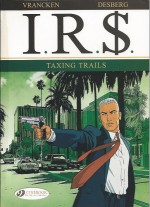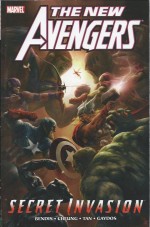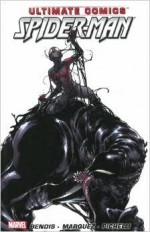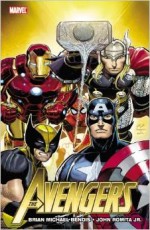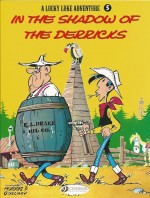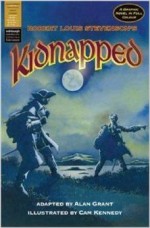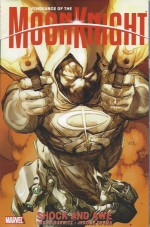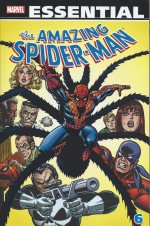
By Gerry Conway, Stan Lee, John Romita Sr., Ross Andru, Gil Kane & various (Marvel)
ISBN: 978-0-7851-1365-2
The Amazing Spider-Man was always a comicbook that matured with – or perhaps just slightly ahead of – its fan-base and this sixth exceptionally economical monochrome volume of chronological web-spinning adventures sees the World’s Most Misunderstood Hero through one of the most traumatic periods of his career.
By the time of these tales Stan Lee had replaced himself with young science fiction author Gerry Conway and the scripts acquired a more contemporary tone (which of course often feels quite outdated from here in the 21st century, Man!) which were purportedly more in tune with the times whilst the emphatic use of soap opera subplots kept older readers glued to the series even when the bombastic battle sequences didn’t.
Moreover, as a sign of the times a hint of cynical surrealism also began creeping in…
Thematically, there’s a decline in the use of old-fashioned gangsterism and a growing dependence on outlandish villains. The balance of costumed super-antagonists with thugs, hoods and mob-bosses, was gradually ending and soon the global resurgence of interest in supernatural stories would result in more monsters and uncanny happenings…
Nevertheless the Wallcrawler was still indisputably mainstream comics’ voice of youth and he defined being a teenager for young readers of the 1970s, tackling incredible hardships, fantastic foes and the most pedestrian and debilitating of frustrations.
High School nerd Peter Parker had grown up and gone to college. Because of his guilt-fuelled double-life he struggled there too, developed a stress ulcer but found true love with policeman’s daughter Gwen Stacy…
This volume, collectively spanning October 1972-October 1974, reprints Amazing Spider-Man #114-137 and includes team-up tales from Giant-Size Super-Heroes #1 and Giant-Size Spider-Man #1 and 2, opening here with the next chapter in a long-running duel for control of New York’s underworld in ‘Gang War, Schmang War! What I Want to know is … Who the Heck is Hammerhead?’ by Conway, John Romita Sr., Tony Mortellaro & Jim Starlin, from #114.
Our angst-ridden arachnid is trapped between the battling mobs of 1930s movie gangster pastiche Hammerhead and archenemy Dr. Octopus; each seeking to dominate the Big Apple’s underworld.
In the melee Spidey is captured by the brutally ruthless newcomer and learns from the boastful braggart how an ordinary amnesiac gunsel was rebuilt into an unstoppable cyborg by a rogue scientist named Jonas Harrow.
Seconds from death, Spider-Man is driven to risk everything on a wild escape bid after he overhears that Ock is meeting up with an old lady and fears that his beloved, befuddled Aunt May is once more sheltering the many-armed menace…
Dashing across town, he breaks in to Ock’s HQ only to be brained with a vase by the terrified May. Moments behind him are Hammerhead’s goons and all too soon ‘The Last Battle!’ (art by Romita Sr. & Mortellaro) is underway. As the mobsters decimate each other, Spider-Man barely escapes being shot by his own aunt and is more than happy to disappear when the police show up to arrest (almost) everybody.
In the aftermath, however, May astounds everybody by revealing that she will be staying in Octopus’ Westchester mansion until he is released…
Amazing Spider-Man #116 began an extended political thriller as charismatic reformer Richard Raleigh opens a savvy campaign to become Mayor, only to be opposed and hunted by a brutish monster in Suddenly… the Smasher!’
Older fans will recognise much of the story and art since Conway had recycled and augmented Stan Lee, Romita & Jim Mooney’s black & white story from 1968’s Spectacular Spider-Man Magazine (with additional art by Romita & Mortellaro): reconfigured to encompass new subplots regarding May’s absence and publisher J. Jonah Jameson‘s involvement and obsession with Raleigh…
The drama deepens with ‘The Deadly Designs of the Disruptor!’ as the monster’s masked master intensifies his efforts to destroy the would-be Mayor – with only Spider-Man seemingly able to deter the maniac – before the affair finally culminates in a ‘Countdown to Chaos!’ wherein the true architect of the campaign of terror is exposed and destroyed…
Peter’s problems exponentially increased in #119 as a mysterious telegram to May calls him away to Canada to meet a man named Rimbaud. Before he leaves, however, his best friend’s father has a disturbing episode.
Norman Osborn had been the maniacal Green Goblin until cured by hallucinogen-induced amnesia. Now as Parker readies himself for a trip to Montreal, Osborn seems to be recovering his memories…
With no other option the harried hero heads north, arriving in time to be caught in a city-wide panic as another verdant former sparring partner hits town. ‘The Gentleman’s Name is… Hulk’ (an all-Conway & Romita collaboration) saw the wall-crawler utterly overmatched but still striving to stop the rampaging green juggernaut, spectacularly culminating in ‘The Fight and the Fury!’ (drawn by Gil Kane with Paul Reinman and inked by Romita & Mortellaro).
With the immediate threat averted, Peter at last rendezvous with Rimbaud only to see the man murdered before he can share whatever secret he knew about May Parker…
In these days of an infinitude of fan-sites, publicity cycles and gleeful spoiler-mongers, it takes a lot to keep a shock ending from the readers, but back in 1973 comics consumers had only word of mouth and the story itself. Thus Amazing Spider-Man #121 staggered everybody when it was released…
The Norman Osborn storyline kicked into high gear on ‘The Night Gwen Stacy Died’ (Conway, Kane, Romita & Mortellaro), the initial instalment of a two-part tale which stunned the readership as Peter’s greatest efforts are not enough to save his intended from the insane rage of the resurgent Green Goblin. The tragic episode then leads inexorably to ‘The Goblin’s Last Stand!’ and a grim and gritty new direction…
With Spider-Man accused of murdering Osborn and implicated in Gwen’s death, Jameson takes advantage of a new kind of metahuman champion in #123; engaging a Hero for Hire to bring the webspinner to justice in ‘…Just a Man Called Cage!’
However the clash only proves that the antagonists’ lives are more tragically similar than different and Luke Cage resigns from the case in a most distinctive manner…
As previously stated, at this time horror was on the rise and the trend permeated all aspects of Marvel continuity. In #124, Jameson’s astronaut son John was revealed to have picked up a strange gem during a moonwalk which transformed him into a lupine beast bearing ‘The Mark of the Man-Wolf’ (art by Kane, Romita & Mortellaro).
Deranged and deadly, the hairy horror stalked his own fiancée Kristine Saunders as well as his father, with a fighting-mad Spider-Man reacting in a far more brutal manner than ever before…
The conclusion marked the introduction of the next star penciller to the venerable strip as Ross Andru joined Conway and Romita to delineate the end of the ‘Wolfhunt!’ offering a particularly grisly cure for the altered astronaut…
In #126 a new subplot bloomed as a marketing firm hired the astounded and unbelieving arachnid to build a “Spider-Mobile†whilst an old and inept enemy returned in ‘The Kangaroo Bounces Back!’ (illustrated by Andru & Mooney).
Short of cash and desperate, Spidey ropes in best frenemy Johnny (Human Torch) Storm to help assemble the anticipated automobile, but is totally unprepared for his Australian attacker since the Kangaroo has had a power upgrade from a mad doctor named Harrow…
And in the apartment Peter shares with Harry Osborn, the son of the Green Goblin finally succumbs to the mental illness that has been sucking him down since the death of dear old dad…
Peter’s great friend and good time girl Mary Jane Watson comes under the spotlight in #127 as ‘The Dark Wings of Death!’ (Conway, Andru, Frank Giacoia & Dave Hunt) finds her targeted by a strangely familiar monster who believes she witnessed his last kill. The mystery concludes in ‘The Vulture Hangs High!’ wherein an incredible truth about the avian atrocity is revealed.
Moreover, portents of future trouble manifest as Parker’s biology tutor Professor Miles Warren warns that the student’s grades are slipping and his position is far from secure…
Conway, Andru, Giacoia & Hunt then crafted a true landmark in comics history in Amazing Spider-Man #129 with ‘The Punisher Strikes Twice!’ which introduced not only the renegade gunslinger but also nefarious manic mastermind The Jackal.
Although one of the industry’s biggest hits from the late 1980s onwards, the compulsive vengeance-taker was always an unlikely and uncomfortable star for comicbooks. His methods are always excessively violent and usually permanent. It’s intriguing to note that unlike most heroes who debuted as villains (Black Widow or Wolverine come to mind) the Punisher actually became more immoral, anti-social and murderous, not less: the buying public simply shifted its communal perspective; The Punisher never toned down or cleaned up his act…
He was created by Conway, Romita Sr. and Andru; an understandably toned down and muted response to popular prose anti-heroes like Don Pendleton’s Mack Bolan: the Executioner: the cutting edge of a bloody tide of fictive Viet Nam vets who all turned their training and talents to wiping out organised crime in the early 1970s.
In the short, sharp shocker the man with the skull logo was duped by his manipulative partner into hunting Spider-Man. Still a suspect in the death of Norman Osborn, the hero was easy to set up for the murder of the Punisher’s personal gunmaker…
The long-running mystery over May’s connection to Doc Ock was at last addressed in #130 as ‘Betrayed!’ finds Hammerhead prodded and provoked by the Jackal just as Octavius breaks out of jail.
Distracted by the now completed Spider-Mobile, the Wallcrawler is slow to react until he finally discovers why his aunt is so important to the villain, but by then she’s in the process of becoming Mrs. Otto Octavius…
Spiderman is just about to bust up the wedding in ‘My Uncle… My Enemy?’ when Hammerhead beats him to it. As the three-way battle escalates the truth comes out. May has inherited a desolate Canadian island which just happens to be teeming with uranium deposits which both Ock and Hammerhead want to secure as the means to becoming an independent nuclear power…
Ock has already built an experimental atomic plant on the rocky crag and when his rival invades it all Peter can do is get May out before the entire place becomes an atomic inferno…
Romita, Reinman & Mortellaro return to limn #132 as the weary Spider-Man arrives back in New York only to stumble into ‘The Master Plan of the Molten Man!’ When old school flame Liz Allen resurfaces, Peter has no idea she is secretly trying to help her criminal stepbrother.
As a super-strong metal-skinned bandit Mark Raxton was only a minor inconvenience to Spider-Man but now his chemically induced condition has worsened and he is swiftly turning into an incandescent human fireball. By the time ‘The Molten Man Breaks Out!’ in #133, however, there is nothing the hero can do except fight until one of them is dead…
With the monster boom in full swing Giant-Size Super-Heroes #1 (June 1974) then teamed two of the Arachnid’s eeriest enemies in a double-length epic as ‘Man-Wolf at Midnight!’ (Conway, Kane & Esposito) finds John Jameson again gripped by murderous moon madness and enthralled by Living Vampire Morbius ‘When Strikes the Vampire!’
That dynamic dust-up led directly into Giant-Size Spider-Man #1 (July 1974) wherein the web-spinner went in search of an experimental flu vaccine improbably carried on a ocean liner in ‘Ship of Fiends!’ and clashed with Dracula and a scheming Maggia Don at ‘The Masque of the Black Death!’ (Conway, Andru & Don Heck)…
The much-misunderstood hero again crossed paths with The Punisher in Amazing Spider-Man #134-135 when a South American bandit – trained to be his oppressive regime’s Captain America before going freelance – attempted to pillage a Manhattan tour boat in ‘Danger is a Man Named… Tarantula!’ (Conway, Andru, Giacoia & Hunt).
Once again unwilling allies, the ethically-estranged duo dutifully dismantled the villain’s schemes after a ‘Shoot-Out in Central Park!’ but the real danger was building elsewhere as poor Harry accepted at last the infamous inheritance of his devilish, recently departed dad…
Before then, however, Giant-Size Spider-Man #2 saw the Webslinger drawn into battle with Shang-Chi, Master of Kung Fu as sinister immortal Fu Manchu framed Spider-Man in ‘Masterstroke!’ Eventually the duped heroes cleared the air in ‘Cross… and Double-Cross!’ before uniting to foil the cunning Celestial’s scheme to mindwipe America from the ‘Pinnacle of Doom!’
This compelling compendium concludes in a two-part thriller as Conway, Andru, Giacoia & Hunt’s long-brewing clash of former friends kicks off with completely crazy Harry attempting to blow up Peter and Mary Jane. Privy to his best friend’s secret, the maniac then targets all Parker’s loved ones in ‘The Green Goblin Lives Again!’
The desperate, deadly duel ends when ‘The Green Goblin Strikes!’ resulting in doom, destruction, shocking revelations and another tragedy for Peter to feel forever responsible for…
Despite major qualification this is still a fantastic book about an increasingly relevant teen icon and symbol. Spider-Man at this time became a crucial part of many youngsters’ lives and did so by living a life as close to theirs as social mores and the Comics Code would allow.
Blending cultural veracity with glorious art, and making a dramatic virtue of the awkwardness, confusion and sense of powerlessness most of the readership experienced daily, resulted in an irresistibly intoxicating read, delivered in addictive soap-opera instalments, but none of that would be relevant if the stories weren’t so compellingly entertaining.
The tales in this transitional tome at last proved Spider-Man was bigger than any creator and was well on the way to becoming as real as Romeo and Juliet, Sherlock Holmes or Tarzan.
© 1972, 1973, 1974, 2011 Marvel Entertainment Group, Inc. All rights reserved.

